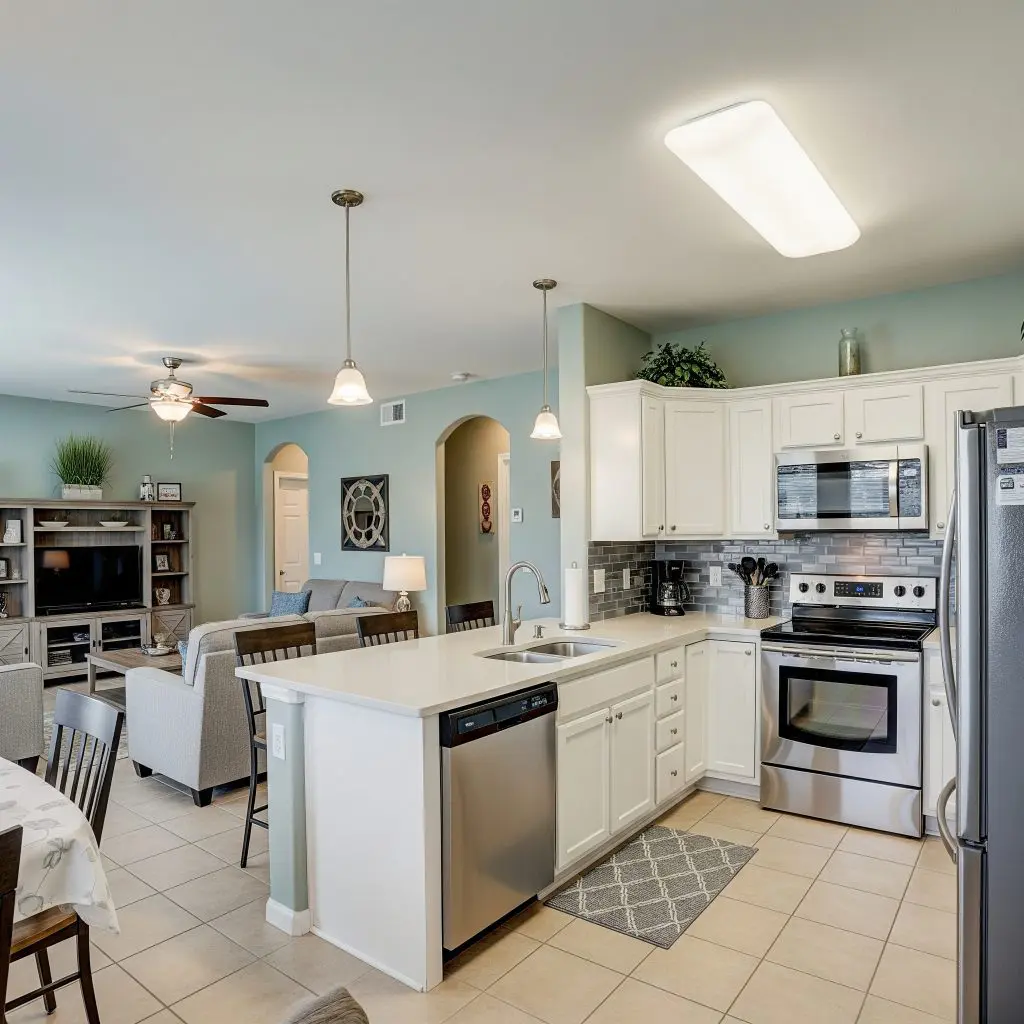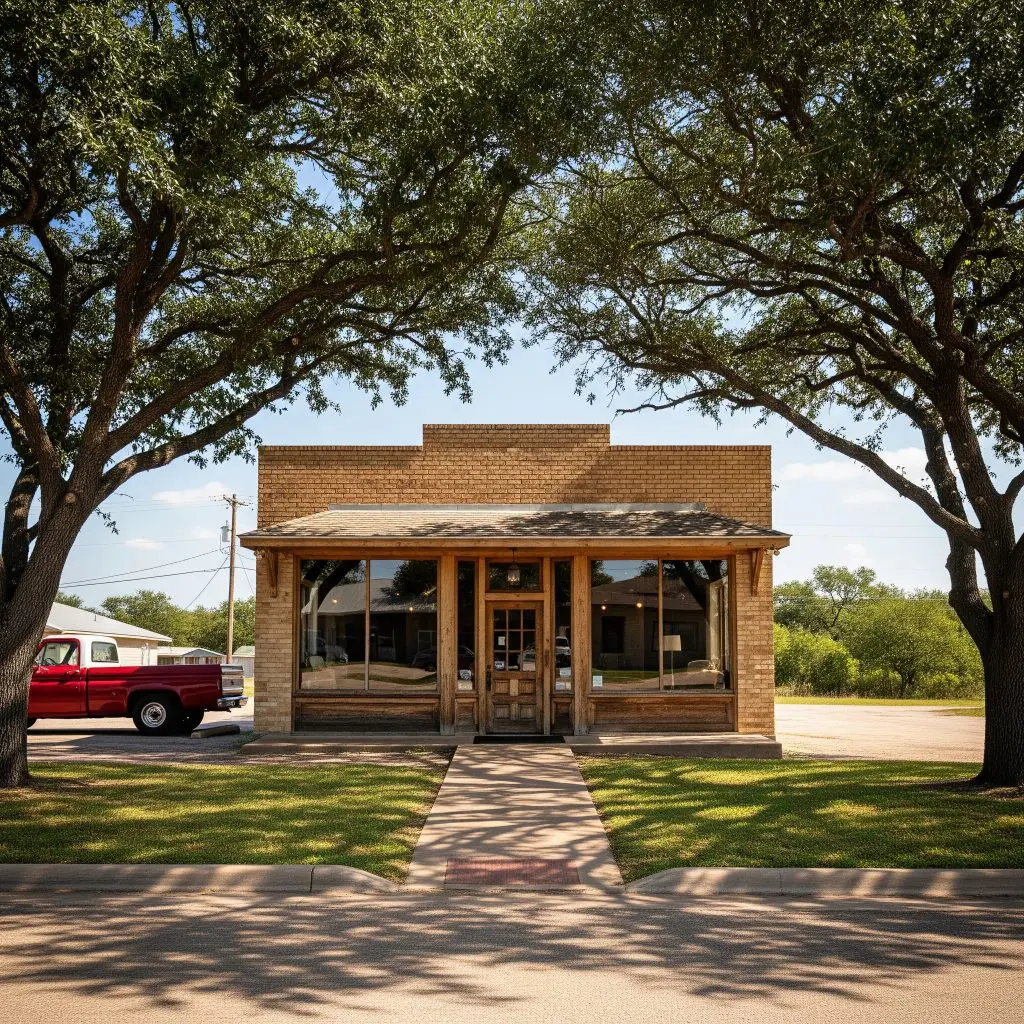Louisiana Inflation Budgeting & Real Estate Investment Guide 2025: State-Specific Strategies
With the economic uncertainties and marketplace volatility of 2025, understanding how to navigate inflation and pinpoint the best real estate investment opportunities in Louisiana is paramount. This comprehensive guide is tailored to Louisiana’s unique economic landscape—covering everything from inflation budgeting, cost of living factors, and state-level economic drivers to the best-performing real estate sectors and local market analysis. Whether you are a Louisiana resident aiming to safeguard your wealth, or an investor seeking resilient opportunities in the Pelican State, this resource is your authoritative blueprint.
- Louisiana Inflation Budgeting & Real Estate Investment Guide 2025: State-Specific Strategies
- Understanding Louisiana’s Economic Indicators & 2025 Inflation Trends
- Cost of Living & Budgeting for Inflation in Louisiana
- Best Real Estate Investment Opportunities in Louisiana: 2025 Statewide Overview
- Suburban Family Housing: The 2025 Investment Focus in Louisiana
- Louisiana Economic Policy and its Effect on Inflation & Real Estate
- Major Metropolitan Areas Outlook: 2025 Suburban Real Estate Analysis
- Real Estate as an Inflation Hedge in Louisiana
- Property Tax Implications and State Regulatory Environment
- Forecast for Louisiana’s Real Estate and Economy (2025 and Beyond)
- Louisiana Local Success Stories & State-Specific Case Studies
- Conclusion: Strategic Steps for Louisiana Investors and Residents
Understanding Louisiana’s Economic Indicators & 2025 Inflation Trends
- Inflation Rate: Through Q1 2025, Louisiana has maintained an average inflation rate of 4.3%, slightly above the U.S. national average, due largely to energy and shipping costs along the Gulf Coast.
- Key Economic Drivers: Louisiana’s economy is fueled by oil & gas, petrochemicals, maritime trade, agriculture, and a growing healthcare sector. Recovery after 2023-24 energy sector volatility is occurring, aided by infrastructure investments underway until 2027.
- Population Trends: Louisiana’s population growth has rebounded to a projected 0.8% annual increase for 2025, especially in metro areas like Baton Rouge and Lafayette, and in the exurbs of New Orleans, driven by in-migration and infrastructure expansion.
- Unemployment Rate: As of March 2025, the state unemployment rate is 5.1%, improved from pandemic highs but still above the U.S. average, with resilient job markets in healthcare, logistics, and skilled trades.
Cost of Living & Budgeting for Inflation in Louisiana
Louisiana’s overall cost of living remains below the national average (91.5 vs. 100 for the U.S. in 2025), though elevated transportation and housing costs persist in urban and coastal regions. Here are budgeting tips tailored to Louisiana residents:

- Utilize State-Specific Resources: Take advantage of Louisiana’s property tax exemptions, such as the state’s homestead exemption ($75,000 off assessed value).
- Control Utility Expenses: The subtropical climate means higher energy costs in summer—consider upgrading to energy-efficient appliances and leveraging state incentive programs for weatherization and solar.
- Healthcare Costs: Shop health plans via the Louisiana Health Insurance Marketplace and compare state-subsidized options if eligible.
- Transportation: Budget for vehicle expenses considering frequent flooding; research insurance add-ons for flood protection, and evaluate proximity to upgraded mass transit options in metro New Orleans and Baton Rouge.
Best Real Estate Investment Opportunities in Louisiana: 2025 Statewide Overview
During periods of high inflation, real estate generally serves as a robust hedge. In Louisiana, suburban family housing stands out for both resilience and growth potential due to demographic shifts and infrastructure initiatives. While inner city neighborhoods see volatility, the following areas are outperforming:
Need capital? GHC Funding offers flexible funding solutions to support your business growth or real estate projects. Discover fast, reliable financing options today!
Test Your Expertise: The Complexities of the 1031 Exchange

As a sophisticated real estate investor, you understand that the 1031 Exchange is a cornerstone strategy for tax deferral and wealth accumulation. But beyond the basics, the intricacies of the 1031 Exchange rules can pose significant challenges. This quiz is designed to test your in-depth knowledge and highlight critical nuances that separate casual investors from true experts in 1031 Exchange transactions.
Instructions: Choose the best answer for each question.
⚡ Key Flexible Funding Options
GHC Funding everages financing types that prioritize asset value and cash flow over lengthy financial history checks:
-
Bridge Loans: These are short-term loans used to "bridge the gap" between an immediate need for capital and securing permanent financing (like a traditional loan or sale). They are known for fast closing and are often asset-collateralized, making them ideal for time-sensitive real estate acquisitions or value-add projects.
-
DSCR Loans (Debt Service Coverage Ratio): Primarily for real estate investors, these loans are underwritten based on the property's rental income vs. debt obligation ($\text{DSCR} = \text{Net Operating Income} / \text{Total Debt Service}$), not the borrower's personal income or tax returns. This offers flexibility for those with complex finances.
-
SBA Loans: The Small Business Administration (SBA) guarantees loans offered by partner lenders. While providing excellent terms (long repayment, lower rates), the application process is typically slower than private/bridge funding, often making them less suitable for immediate needs. SBA eligibility heavily relies on the DSCR metric for repayment assessment.
🌐 Learn More
For details on GHC Funding's specific products and to start an application, please visit their homepage:
The Ultimate DSCR Loan for Rental Property Quiz

Are you looking to expand your real estate investment portfolio? A DSCR loan might be the perfect tool to help you achieve your goals without relying on traditional income documentation. Test your knowledge with this quiz to see if you're ready to master the intricacies of a DSCR loan for rental property.
1. Greater Baton Rouge Suburbs (Denham Springs, Prairieville, Zachary)
- Population Growth: Over 2% annually since 2022, driven by young families moving from city centers.
- Price Trends: Median single-family home prices rose from $244,000 (2023) to $274,000 (Q1 2025), with rental yields exceeding 6.3% in up-and-coming subdivisions.
- Case Study: The Oak Grove development in Prairieville rapidly sold out phase one, with new construction homes appreciating 9%+ in 18 months.
2. New Orleans Northshore (Mandeville, Covington, Slidell)
- Market Drivers: Out-migration from central New Orleans post-hurricane Delta has fueled demand for higher-elevation, flood-protected suburban homes.
- Investment Potential: Short- and medium-term rental demand soared with heightened tourism and healthcare-related relocation. Slidell’s rental occupancy topped 97% in early 2025.
- Property Tax Environment: St. Tammany Parish boasts some of the lowest property tax rates in the state (0.53%), making cash flow strong for landlords.
3. Lafayette Metro Area (Youngsville, Broussard, Carencro)
- Employment Base: Lafayette region is a healthcare and education hub, with robust jobs at Ochsner Lafayette General and the University of Louisiana at Lafayette.
- Development Hotspots: Youngsville saw a 14% population bump in three years, leading Acadiana in new suburban neighborhoods and community amenities.
- Practical Example: Rental income on a 3BR/2BA in Youngsville averages $1,800/month with a 97% annual occupancy rate in 2024-2025, providing natural protection against inflation for landlords.
Suburban Family Housing: The 2025 Investment Focus in Louisiana
Suburban single-family properties have become the state’s best inflation hedges. Key reasons:
- In-Migration: Louisiana’s 2025 “exurban boom” is powered by both local and out-of-state buyers seeking affordable, high-amenity neighborhoods with strong K-12 districts.
- Remote Work: Corporate relocations and new flex-work policies are boosting demand in areas with larger lots, new construction, and better flood defenses.
- Value Retention: Homes in high-elevation zones (>15 feet above sea level) show the best price resilience versus flood-prone areas.
How to Budget for a Suburban Home Purchase in Louisiana (2025)
- Down Payment: Average 10%–15% required for conventional loans; some state programs reduce this for first-time buyers.
- Monthly Payments: With prevailing 2025 mortgage rates at 6.6% (as of April), expect a $300,000 home to require ~$2,200/month for PITI (principal, interest, taxes, insurance).
- Insurance: Factor sharply rising flood and windstorm insurance—average annual premiums now $1,800 in coastal and $1,200 in inland zones.
- Maintenance: Louisiana’s climate requires regular property upkeep: allocate 1.5% of property value annually.
Louisiana Economic Policy and its Effect on Inflation & Real Estate
The state government has responded to inflationary pressures with a mix of property tax freezes for seniors, expanded state housing incentives (including the Louisiana Home Energy Assistance Program), and infrastructure investments under both federal and state grants, particularly in flood mitigation and road improvements. These efforts add stability to suburban real estate values.
Real Estate Investment Incentives (2025)
- Restoration Tax Abatements: Urban-to-suburban migration has spurred demand for the state’s Restoration Tax Abatement Program (RTA), which freezes property taxes at pre-improvement rates for up to 5 years on qualifying renovations.
- Louisiana Housing Corporation (LHC) Grants: First-time homebuyers may access down-payment grants and reduced-fee loans across qualifying parishes.
- Enterprise Zones: Select suburban corridors offer sales and property tax rebates for new construction or substantial improvements.
Major Metropolitan Areas Outlook: 2025 Suburban Real Estate Analysis
Greater New Orleans Region
✅ Small Business Resources
-
SBA – Small Business Administration
https://www.sba.gov - SCORE Mentors (Free Mentoring & Workshops)
https://www.score.org - Small Business Development Centers (SBDC)
https://americassbdc.org
Are You an SBA Real Estate Loan Expert?

Test your in-depth knowledge on using SBA Loans for owner-occupied commercial Real Estate acquisition. These questions delve into the critical details that can impact your business's growth and financial strategy.
Main Trends: Elevated insurance costs and stricter development codes are pushing buyers to higher elevation, suburban rings (e.g., Jefferson Parish, St. Tammany Parish). Home values up 5.2% in the Northshore versus only 1.3% in Orleans Parish year-over-year.
Baton Rouge Metropolitan Area
✅ Real Estate Investor Resources
-
AirDNA (Short-Term Rental Data)
https://www.airdna.co - Rentometer (Rent Comps)
https://www.rentometer.com - Zillow Research & Data
https://www.zillow.com/research
DSCR Loan IQ Quiz!

Test your knowledge of Debt Service Coverage Ratio (DSCR) loans!
Growth Factors: The completion of major infrastructure projects, such as the I-10 widening and new bridge proposal, and new healthcare campuses, is accelerating suburban development on the east and southeast corridors.
Lafayette-Acadiana
Hot Zones: Planned communities in Youngsville, luxury subdivisions in Broussard, and affordable builder-grade neighborhoods in Carencro are all seeing low inventory and rapid price appreciation. Acadiana also benefits from resilient job opportunities and post-pandemic population stabilization.
Real Estate as an Inflation Hedge in Louisiana
Properties in robust school zones, low-crime parishes, and non-floodplain communities maintain higher value retention versus rental or downtown condos. Investors often combine single-family rentals with ADUs (Accessory Dwelling Units) to maximize returns and hedge against future market softening. Current gross rental yields in top suburbs exceed 6.5%, often outpacing CPI in the region.
Property Tax Implications and State Regulatory Environment
- Louisiana Property Taxes: Among the lowest rates in the U.S. (statewide average: 0.51% of assessed value), but check for parish-specific levies that may affect rental profitability.
- Parish-Specific Factors: Orleans and East Baton Rouge parishes levy local sales and parcel taxes, impacting investment math for landlords and homebuyers. Always factor school, fire, and flood district assessments into pro forma analyses.
Forecast for Louisiana’s Real Estate and Economy (2025 and Beyond)
- Population: Statewide projections see 4.8 million by 2027, with exurban parishes outpacing cities in percentage growth.
- Job Market: Expanded healthcare, logistics, and back-office centers are offsetting energy-sector volatility, making stable income markets for rental investors.
- Inflation Outlook: Moderate to above-average inflation projected through Q3 2025 due to energy pricing and rebuilding supply chain constraints.
- Construction Pipeline: Permitting activity indicates continued strong demand for 1,800–2,500 sq.ft. new builds in flood-resistant, suburban corridors.
Louisiana Local Success Stories & State-Specific Case Studies
- Prairieville Suburb: Local developer Lafitte Homes completed a 250-unit build-to-rent subdivision in 2023. By 2025, 96% are leased to local school district employees and medical staff, yielding 7.1% cash-on-cash returns despite rising insurance costs.
- St. Tammany Parish Investor: A private couple acquired four single-family rentals in 2022-2023; by holding rents just below market value, they maintained 100% occupancy through the inflation spike, raised rents 9% in 2024, and refinanced with cash-out in 2025 as property values climbed 8%.
- Lafayette Families: New suburban homeowners leveraged state-backed down payment assistance and multi-generational housing layouts to offset cost-of-living increases and preserve purchasing power despite persistent inflation.
Conclusion: Strategic Steps for Louisiana Investors and Residents
- Prioritize suburban, high-elevation, and low-tax communities for long-term resilience.
- Leverage state and parish-level incentives like the Homestead Exemption, RTAs, and LHC grants.
- Regularly review budgeting for insurance, property taxes, and maintenance given Louisiana’s unique weather and regulatory environment.
- Analyze neighborhood-level growth, school quality, and infrastructure investments for reliable appreciation during and after inflationary cycles.
For those seeking to preserve wealth or find new opportunities during periods of high inflation, Louisiana’s suburban family housing markets—when paired with sound financial planning and a careful eye on state and local policy dynamics—offer robust and resilient investment potential for 2025 and beyond.
Get a No Obligation Quote Today.



